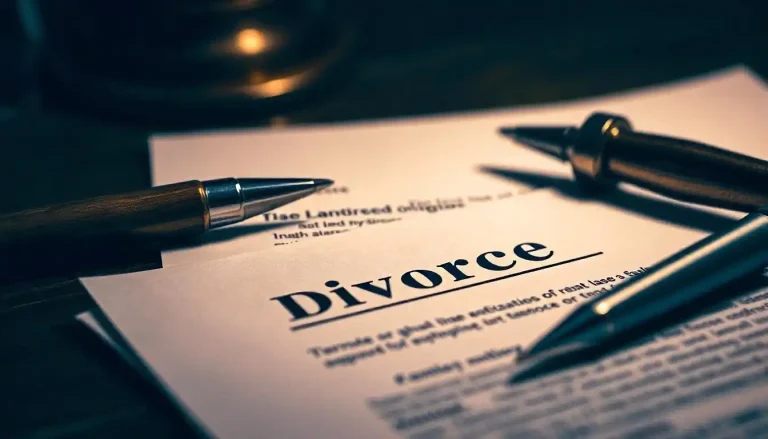Beverly Hills auto claims are intricately linked to California’s Pure Comparative Negligence Rule, which fundamentally affects compensation outcomes. This rule allows drivers to recover damages proportionate to their fault in an accident. Consequently, even those partially responsible may receive reduced compensation. Maneuvering these claims necessitates an astute understanding of local traffic dynamics, meticulous documentation, and adept negotiation skills. The complexities involved underscore the importance of strategic approaches in securing fair settlements amidst liability contentions.
Overview of Auto Claims in Beverly Hills
Auto claims in Beverly Hills are a critical aspect of the local insurance landscape, shaped by unique regional factors and legal nuances. The dense and affluent area is characterized by heavy Beverly Hills traffic, which considerably contributes to the frequency of auto claims. The congestion and constant vehicular activity heighten the risk of accidents, necessitating thorough auto insurance options. These options cater to varying needs, offering coverage from basic liability to expansive policies addressing property damage and personal injury. The insurance market in Beverly Hills, as a result, is robust, with insurers tailoring their offerings to meet the diverse demands of drivers maneuvering this busy locale. Additionally, understanding local traffic patterns and insurance requirements is paramount for residents and insurers managing auto claims efficiently.
Understanding California’s Pure Comparative Negligence Rule
In the legal landscape of California, the pure comparative negligence rule plays a significant role in determining liability and compensation in auto accident claims. This rule allows a party involved in an accident to recover damages proportionate to their degree of fault. For instance, if a driver is 30% at fault in a collision, they can still recover 70% of the damages incurred. Negligence examples in auto claims often include speeding, distracted driving, or failing to yield. Fault assessment is essential, as it involves evaluating each party’s actions leading to the accident. The pure comparative negligence framework guarantees that even those partially responsible can receive compensation, promoting a balanced approach to addressing auto claim disputes in California.
Determining Fault in Auto Accidents
In the process of determining fault in auto accidents, the systematic gathering of evidence stands as a critical component, ensuring that all relevant facts are accurately assessed. Witness statements provide firsthand accounts that can clarify the sequence of events and identify negligent behaviors. Additionally, police reports, often containing professional evaluations and diagrams of the accident scene, greatly influence the determination of each party’s level of fault.
Evidence Gathering Importance
Determining fault in auto accidents relies heavily on the meticulous gathering of evidence. In the context of Beverly Hills auto claims, evidence preservation is vital. Ensuring that physical evidence, such as vehicle damage, is documented promptly and accurately can impact the outcome of claims under California’s pure comparative negligence rule. Effective documentation techniques, such as photographing the accident scene from multiple angles and noting details like weather conditions or road markings, provide significant data for analysis. Additionally, collecting official reports and maintaining records of medical evaluations further strengthen a case. Consulting with a car accident attorney in Beverly Hills can also help ensure that no critical piece of evidence is overlooked during this process. These practices not only facilitate accurate fault determination but also support equitable claim resolutions. Hence, a structured approach to evidence gathering is essential for a thorough understanding of each incident.
Witness Statements Role
While the careful collection of physical evidence lays the groundwork for understanding auto accident claims, witness statements serve as a complementary asset in the fault determination process. The significance of these statements lies in their potential to corroborate or challenge physical evidence, offering a narrative from those present at the scene. Evaluating witness credibility is critical; factors such as the witness’s proximity to the accident, their relationship to involved parties, and consistency in retelling events influence credibility. Statement accuracy is equally paramount, as discrepancies can complicate fault assessment. An objective analysis of witness accounts, when combined with tangible evidence, provides a more thorough view of the incident, contributing to fairer outcomes under California’s comparative negligence framework.
Police Reports Impact
Police reports play a pivotal role in the process of determining fault in auto accidents, as they provide an official account of the incident from the responding officers. The accuracy of these reports is vital, as they influence insurance claims and legal proceedings. Detailed observations by officers, such as descriptions of vehicle damage, skid marks, and witness statements, contribute to police report accuracy. Moreover, the accessibility of these reports guarantees that involved parties and their legal representatives can review pertinent information, facilitating fair assessments of liability. In Beverly Hills, where traffic incidents are not uncommon, the prompt and precise documentation of accidents by law enforcement is essential. This guarantees that California’s pure comparative negligence rule is applied accurately in adjudicating claims.
The Role of Insurance Companies
Insurance companies play a pivotal role in the auto claims process within Beverly Hills, particularly when maneuvering the complexities of the comparative negligence rule. They are responsible for managing the insurance claim process, which includes evaluating the extent of damage, determining fault, and negotiating settlement strategies. Additionally, insurance companies meticulously assess liability factors to guarantee that settlements reflect the degree of negligence attributed to each party involved in the accident.
Insurance Claim Process
Numerous complexities characterize the insurance claim process in Beverly Hills, especially when addressing auto claims under the comparative negligence rule. The role of insurance companies is critical, as they must meticulously evaluate each claim to determine liability percentages. This evaluation is essential to guarantee accurate compensation aligned with California’s pure comparative negligence framework. Insurance companies are vigilant in identifying potential instances of insurance fraud, as fraudulent claims can distort liability assessments and lead to unjust payouts. Additionally, claim denial becomes a significant aspect of the process when discrepancies or insufficient evidence arise. Insurers employ rigorous investigation techniques to substantiate claims, thereby safeguarding against undue financial losses. Their objective analysis helps maintain the integrity of the claims process, guaranteeing fair outcomes for all parties involved.
Negotiating Settlements Strategies
Evaluating liability in auto claims sets the stage for the intricate process of negotiating settlements within Beverly Hills’ insurance landscape. Insurance companies, acting as pivotal entities, engage in settlement negotiation to determine fair compensation strategies. They meticulously analyze accident reports, witness statements, and existing policies to assess the extent of damages and liability distribution. Their primary objective is to minimize payouts while ensuring a resolution within legal frameworks. Insurers employ experienced adjusters who negotiate with claimants or their legal representatives to reach mutually acceptable settlements. These negotiations often involve leveraging statistical data, precedent cases, and policy limits to justify compensation amounts. Ultimately, insurance companies endeavor to balance their financial interests with the imperative of honoring contractual obligations to policyholders.
Assessing Liability Factors
Determining liability in auto claims involves a thorough examination of several key factors by insurance companies. They meticulously analyze liability factors such as traffic laws, police reports, and eyewitness testimonies to ascertain each party’s degree of responsibility. The negligence assessment process is vital, as it directly influences claim resolution under California’s pure comparative negligence rule. Insurance companies evaluate driving behaviors, road conditions, and vehicle damage to determine fault percentages. These assessments are significant in calculating compensation, as even minimal negligence can impact payout amounts. Insurers aim to establish a detailed liability profile, ensuring fair settlements align with the extent of each party’s fault. By scrutinizing these elements, insurance companies effectively navigate the complexities inherent in Beverly Hills auto claims.
Legal Challenges in Beverly Hills Auto Claims
While maneuvering auto claims in Beverly Hills, legal challenges often arise due to the complexities of the local comparative negligence rule. Parties frequently encounter liability disputes, which can complicate the determination of fault percentages. These disputes necessitate skilled legal representation to effectively interpret and argue the nuances of California’s pure comparative negligence framework. Attorneys must meticulously analyze evidence and craft arguments to guarantee their clients’ liability is accurately assessed and minimized. Furthermore, the intricacies of local traffic laws and precedent cases further complicate proceedings, requiring a detailed understanding to navigate effectively. The adversarial nature of these claims often leads to contentious negotiations, emphasizing the importance of legal expertise in achieving favorable outcomes within this complex judicial landscape.
Strategies for Navigating the Claims Process
Maneuvering the claims process in Beverly Hills requires a strategic approach due to the intricate nature of the local comparative negligence rule. Effective strategies begin with meticulous claims documentation, capturing all pertinent details such as accident reports, medical records, and witness statements. These documents form the foundation for evaluating liability and potential compensation. Additionally, employing robust negotiation tactics is essential in steering discussions with insurance adjusters. This involves presenting a well-organized case that highlights the strengths of the claim while anticipating and addressing potential counterarguments. Skilled negotiators often achieve favorable outcomes by remaining informed about legal precedents and utilizing objective evidence to support their stance. Ultimately, precision in documentation and negotiation can greatly influence the trajectory of the claims process.
Impact of Partial Fault on Compensation
Understanding how partial fault affects compensation is pivotal in the claims process, particularly under Beverly Hills’ comparative negligence rule. This rule allows claimants to recover damages even when they are partially at fault. The compensation impact is calculated by determining the claimant’s degree of fault, often expressed as a percentage. For instance, if a claimant is deemed 30% at fault, they would receive 70% of the total damages awarded. This proportional reduction underscores the necessity for accurate fault assessments. Partial fault can considerably alter the final compensation, emphasizing the need for thorough evidence gathering and negotiation. Legal professionals must meticulously analyze accident reports and witness statements to guarantee a fair determination of fault and subsequent compensation adjustment.
Case Studies From Beverly Hills
In analyzing case studies from Beverly Hills, it becomes evident that the application of the comparative negligence rule can markedly influence the outcomes of auto claims. Consider a scenario where two vehicles collide at an intersection: one driver runs a red light, while the other is speeding. Both parties may be found partially at fault, illustrating common negligence examples in Beverly Hills accidents. Under California’s pure comparative negligence framework, each driver’s compensation is adjusted based on their degree of fault. For instance, if the red-light violator is deemed 70% responsible and the speeder 30%, their recoveries reflect those proportions. This rule guarantees a nuanced assessment of liability, often resulting in intricate negotiations and settlements that underscore the complexity of Beverly Hills auto claims.
Tips for Protecting Your Rights as a Driver
To effectively safeguard one’s rights as a driver, it is imperative to be well-versed in the legal frameworks that govern auto claims and liability. In the context of California’s pure comparative negligence rule, understanding driver rights and associated legal protections is essential. It is advisable for drivers to document all accident details meticulously, including gathering photographic evidence and witness statements. Consulting with a legal professional specializing in auto claims can further solidify one’s understanding of available rights and protections. Drivers should also regularly review and update their insurance policies to guarantee adequate coverage. Additionally, adhering to traffic laws and driving defensively can help minimize liability. By taking these proactive steps, drivers can better protect their interests in potential claims or disputes.
Frequently Asked Questions
How Long Does It Take to Resolve an Auto Claim in Beverly Hills?
The claim resolution timeline for auto claims varies considerably, dependent on factors affecting duration such as claim complexity, documentation completeness, and involved parties’ cooperation. Typically, resolutions can range from weeks to several months, reflecting these influencing elements.
Are There Any Exceptions to California’s Pure Comparative Negligence Rule?
California’s pure comparative negligence rule generally lacks exceptions, allowing plaintiffs to recover damages regardless of their negligence level. However, strict liability standards or statutory exceptions may influence specific cases, impacting the application of negligence exceptions differently.
Can I Change My Insurance Company During an Ongoing Auto Claim?
Switching insurance providers during an ongoing claim is possible, but it might complicate the claim process. The original insurance policy typically remains responsible for the claim’s resolution, requiring careful management to avoid potential disruptions or misunderstandings.
What Should I Do if the Other Driver Is Uninsured?
When facing an uninsured driver, one should file a claim through their own insurance if they have uninsured motorist coverage. This coverage helps recover costs for damages and injuries when the at-fault driver lacks insurance.
Is Mediation a Viable Option for Resolving Auto Claims Disputes?
Mediation offers benefits such as reduced costs and faster resolution in auto claims disputes. However, drawbacks include the potential for unequal representation and lack of enforceable outcomes compared to litigation, making it a viable but context-dependent option.




